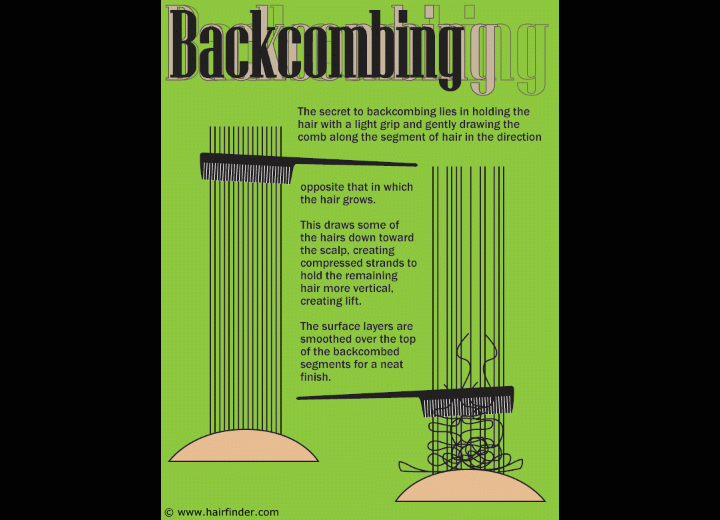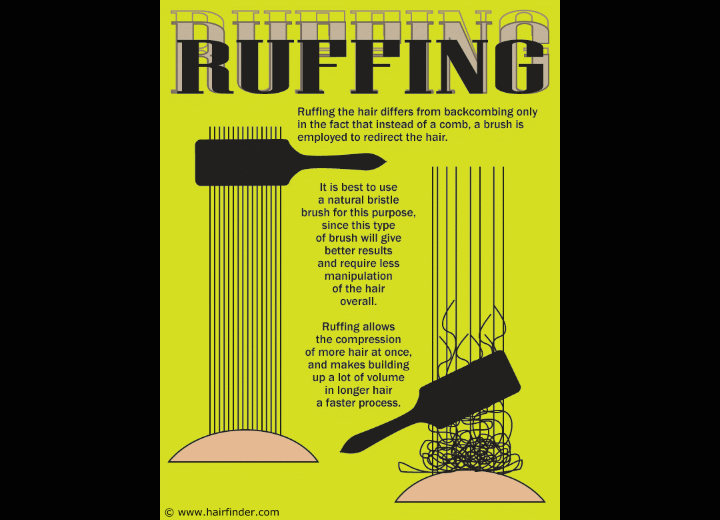How To Backcomb or Tease Hair

Backcombing Basics: Building Up the Bulk
"Backcombing" the hair, commonly referred to as "teasing," is a technique used to build up the lower layers of the hair and create a fuller, more voluminous style. Backcombing is often used in up-style designs to create a specific hair silhouette. The classic beehive hairdo would not have been possible without the use of backcombing.
Today’s use of backcombing tends not to be as extreme as the backcombed hairstyles of yesteryear, but the technique has remained useful and is in many cases highly fashionable. Even in hairstyles that aren’t formal, you can use backcombing techniques to build-up the volume in the top of the head, giving a longer silhouette to the face by creating a bump from which the rest of the hair trails.
The act of backcombing the hair involves taking a segment of the hair and using a styling tool to comb the hair in the opposite direction of its growth. This causes the hair to compress down around its neighboring strands, allowing them to stand up more.
The backcombing is repeated until as much bulk is formed as is desired and then usually the forward edge of the segment is brought back and smoothed over the surface to hide what is a mass of hair. Remember that you don’t want to hold the segment you are manipulating too tightly, because you want the hairs to be easily drawn down upon themselves.
Tools for the Job
While all of the backcombing techniques serve the same purpose, there are slight variations in the tools used to create the amount of lift. The difference in the tools used can affect the amount of lift generated at once, by the amount of hair being manipulated at one time. Typical tools used are combs and brushes.
Any comb or brush can be used, and there are even specially designed combs for the purpose. These contain additional teeth on the sides of the classic comb teeth to grip the hair more and press it down.

When a brush is used for the purpose of backcombing, the process is called ruffing the hair. Since the natural bristles are so densely packed in a brush, a lot of hair gets manipulated in a single pass. This tends to create more lift and tighter compression of the hairs being manipulated.
Teasing Different Hair Types
Some hair types respond better to backcombing than others. Frankly, while virtually any hair type can be bulked up via backcombing, some hair is better suited to the technique. Curly hair generally forms sturdy peaks of hair that can hold up to long-lasting hairstyles.
Wavy and slightly wavy types are also good for a lasting effect, while straight hair may often slip free of its backcombing and revert to a smoother configuration. As frustrating as this may be, it is also a sign of strong, healthy hair. The slip-free effect is even worse with straight and fine hair.
Which brings up another cause for concern: damaging the hair. You never want to be too harsh when backcombing or ruffing the hair. Because you are directing your styling tool in the opposite direction of the way the hair grows, you can easily displace the overlapping scales of the cuticle layer. Imagine the effect of scaling a fish if you are familiar with that concept.
If the cuticle layer gets too badly damaged, you can see frizz and breakage, as well as find that the hair has tangled and knotted when you try to get rid of the backcombing. A raised cuticle allows moisture to escape from within the hair and can lead to additional damage even if the signs of the cuticle scales being dislodged are not readily apparent.
Because of this, you should never try the backcombing technique on damaged or chemically-stressed hair that is already suffering from high porosity. Such hair already has a raised cuticle and will be easily damaged further by the backcombing techniques.
©Hairfinder.com